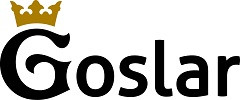Hike along the south-facing, natural forest edge at the southern edge of the Harly and through its natural beech forests. Along the way there are caves and some abandoned quarries.
Adventure trail 1 Middle Harly
Short facts
- start: Parking lot at the Klosterkrug inn at the Wöltingerode monastery
- destination: Parking lot at the Klosterkrug inn at the Wöltingerode monastery
- easy
- 7,57 km
- 2 hours
- 227 m
- 144 m
- Loop tour
best season
Tour waypoints
Kräuter-August-Höhle
Mammutbaum im Harly
Die Kräuter-August-Höhle
Mammutbaum
Kloster Wöltingerode
Schacht II
Denkmal
Klosterbrennerei Wöltingerode
Tour-Dashboard
Weather
General information
Starting point is the parking lot at the Klosterkrug inn on the southern edge of the Wöltingerode monastery. The rogenstein of the Lower Buntsandstein can be observed in the wall surrounding the Wöltingerode complex. The wall partly contains formations of stromatolites. Worth seeing are the monastery distillery and the monastery church.
Opposite the east entrance to the Wöltingerode monastery estate, the Hercynia Street branches off towards the Harly, leading to the former potash shaft II. Soon the street reaches the forest edge and you cross the former railway embankment. At the school bus stop, turn left and follow Hercynia Street steeply uphill. At the top, on the right at a Buntsandstein outcrop, you reach the memorial plaque for A. Schloenbach (1812–1877), who contributed significantly to the research of the Harly.
At the last house, follow a hiking trail straight into the forest, first following the sign "To the Tower" and then turn left following the sign "Beautiful View." From here, along the forest edge on the Harly edge path to a group of private houses, where you immediately turn right again towards Harly. You follow the path northwards uphill into the Bärental. Everywhere in the valley, you see overgrown and dilapidated old excavations of rogenstein, which start wide at the path and round into the slope or extend tunnel-like on both sides approximately west-east into the forest.
Soon you find on the west side of the path in the Bärental access to a small quarry. At its end lies the so-called Kräuter August cave. Here is a layer of red thick-bedded coarse-grained sandstones of the Middle Buntsandstein. You can recognize cross-bedding and ripple marks on the bedding planes.
You continue up the path in the Bärental and leave the path to the east to the Harly tower on your right. This leads you to the middle path, which after a large curve bends north and then runs west (sign "Sequoia"). After a short distance, you see 50 m south of the middle path in the forest the sequoia, which is the only one remaining from a planting of individually standing sequoias in the surroundings from 1880. Continue westward on the middle path and after about 2 km at a junction with a shelter, turn left where you walk down into a valley to the southwest. When you reach the forest edge, you are in the Upper Cretaceous and can follow the circular path along the forest edge to the east to return to Wöltingerode.
Soon you cross the historic railway line, which would lead you to the left into the forest to shaft III of the old potash mine Hercynia. After a longer walk along the forest edge, you find shortly before the intersection with the hiking trail in the Bärental on the left the memorial stone of the Vienenburg painter Fritz Laube.
Direct connection from Goslar via the B6 to Wöltingerode
Parking lot at the Klosterkrug inn at the Wöltingerode monastery
RBB bus: line 822, Goslar - Vienenburg - Lengde - Beuchte
BUND - Regional Association Westharz
Petersilienstr. 23, 38640 Goslar
Tel. 05321 4696075
E-mail: bund.goslar@bund.net
www.bund-westharz.de
Tip!Download brochure "The Harly - From Wöltingerode to the Muschelkalk ridge"

